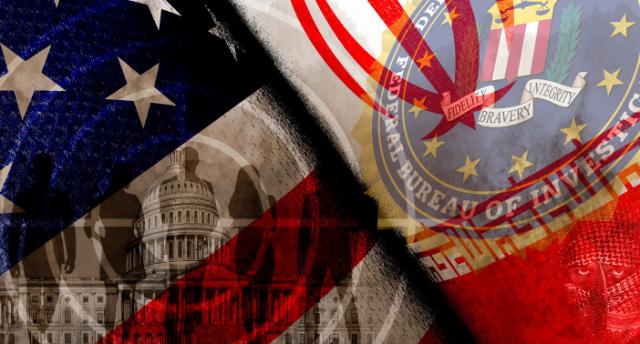In July 2017, Ahmadreza Doostdar, a dual U.S.-Iranian citizen, visited the Oriental Institute Museum at the University of Chicago, where FBI agents surveilled him performing what appeared to be a surreptitious exchange of information — a brush pass — with a woman in one of the museum’s rooms.
After leaving the museum, Doostdar walked toward two nearby Jewish centers, snapping photos with his phone camera, appearing to pay particular attention to entrances and exits, including a wrought iron fence at the perimeter of one the buildings. Doostdar then traveled to Los Angeles where, according to U.S. prosecutors, he met with another Iranian man and tasked him with collecting information on U.S.-based members of Mujahedeen-e-Khalq, an Iranian opposition group listed as a terrorist organization by the United States until 2012.
The details of Doostdar’s alleged activities in the United States were revealed in August 2018 when the Justice Department unsealed an indictment against him, claiming he was acting as an Iranian intelligence operative.
Iranian espionage is nothing new, but the charges against Doostdar, and other recent court cases, including the indictment of a former Air Force linguist who defected to Iran in 2013, highlight what the U.S. intelligence community sees as an increasingly worrying part of Tehran’s covert strategy. Iranian operatives are compiling what are known as “target packages” to undertake prospective future assassinations and terrorist attacks, according to more than half a dozen former U.S. intelligence officials.
The Department of Defense, CIA and FBI declined to comment. The Iranian Mission to the United Nations did not respond to a request for comment.
While it is common practice for intelligence services to create target packages — detailed dossiers “assembled to enable an intelligence or military unit to find, fix, track and neutralize a threat,” according to the indictment of Monica Witt, the American defector — Iran is unique in using them to plan terrorist-type attacks, in case overt hostilities were to break out between Washington and Tehran, say these former officials. Witt, in fact, was a central part of that strategy, providing information that was used to prepare for assassinations of U.S. and Israeli intelligence personnel in Europe, says one of those former officials.
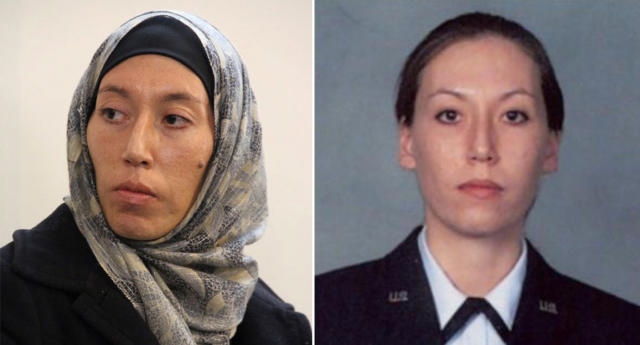
Unlike other major U.S. adversaries, such as Russia and China, Iran’s relative military weakness has led it to focus on preparations to attack “softer” targets, such as U.S. government facilities and personnel, and even civilian institutions like synagogues. These preparatory intelligence activities have been mostly focused abroad, but have also involved targets within the United States. “From a resource perspective,” notes one former senior official, “Iran’s operating philosophy is ‘Terrorism works, so why not use it?’”
The regime in Tehran has cased potential terrorist targets in the past that could be used to retaliate against the United States, says Douglas Wise, a former career senior CIA officer who served as deputy director of the Defense Intelligence Agency from 2014 to 2016. The Pentagon is, in fact, worried less about Iran’s conventional forces than about Tehran’s ability to conduct terrorist attacks, or what is called “asymmetric warfare” in military parlance. “It’s low cost and flexible — it can create casualties, disrupt U.S. facilities, interrupt business, put obstacles in front of diplomacy and undermine confidence with our allies and embolden our adversaries,” he said. “From the Iranian perspective, it plays into their strengths.”
While it’s not always clear why Iranian intelligence is interested in a particular location — and the United States also surveils a variety of foreign targets — Iran’s strategy is clearly different, says one former senior intelligence official.
For Iran, said the former official, it’s “‘You bomb us, we’ll blow something of yours up.’”
The U.S. government has long accused Iran of being involved in terrorist attacks, citing its role, via Hezbollah and other proxies, in the 1983 bombing of the U.S. Marine barracks in Beirut, which killed 241 U.S. troops, and of the U.S. Embassy in Lebanon that same year, which killed 63. Iran also is suspected of directing several bombings in the 1990s, including of the Israeli Embassy in Argentina, a Jewish community center in Buenos Aires and the 1996 Khobar Towers bombing in Saudi Arabia, which killed 19 U.S. military officers.
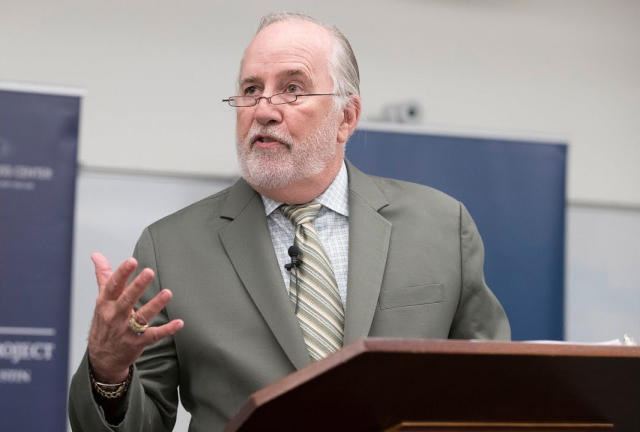
Terrorism may be “the best tool the Iranians have, but if you want to do it right, it takes a great deal of planning,” says Wise. “It can take months or years to collect the necessary information and winnow through options and opportunities, and then you have to do the mechanical aspects — training, equipping, authorizing, professionally conducting and obfuscating attribution as much as you can.”
Going back to the 1990s, suspected Iranian spies, or sometimes their Hezbollah proxies, were observed surveilling U.S. diplomatic facilities, cultural centers and military installations in Europe (including France and Germany), Asia, the Middle East and Latin America, said former intelligence officials. Iranian operatives were observed photographing U.S. government buildings, clocking the movements of people in and out of facilities, identifying entrances and exits, and tracking buildings’ security procedures, said a former U.S. intelligence official.
These casings “aren’t being performed on a lark,” said another former official; they have to be approved at a senior level.
In the past, a few instances of close surveillance of CIA officials by Hezbollah operatives has been of acute concern, said one former intelligence official. “Sometimes you ask the local intelligence service to grab them and have a conversation, but sometimes you need to pull the [CIA] person out of country because of an abundance of caution,” said this former official.
In one case in Europe in the 1990s, said this former intelligence official, a U.S. official with diplomatic status was evacuated over concerns about being closely surveilled by an Iranian intelligence official.
Iran’s need for targeting information to be current — in the event of overt conflict — means Tehran’s intelligence services must continuously collect update information, says another former senior official. “Whenever we saw an Iranian doing surveillance or casing, there’s always a degree of ‘hit the panic button,’” recalls this person. “Discussions would go around whole gamut. There was never any clear satisfactory answer of it. The intel community fell on the side of the Iranian’s performing planning — and not imminent action.”
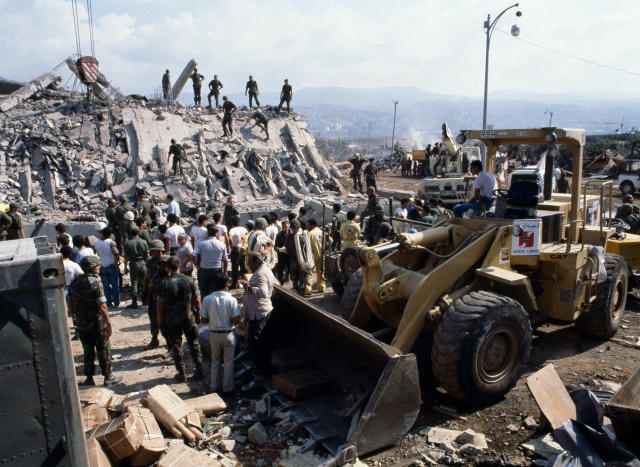
In Latin America, some of the potential preparatory terrorist activity appeared to emanate from the Triple Frontier — where Paraguay, Brazil and Argentina meet — said multiple former officials. Iranian intelligence and Hezbollah operatives were focused on casing Jewish facilities, and potentially individuals, in Brazil and Argentina, said one intelligence official with knowledge of Iranian activities in the region around the turn of the millennium.
Worries about U.S.-directed Iranian terrorism or assassination attempts have waxed and waned with the overall tenor of U.S.-Iranian relations, say former officials — that is, they rise or fall with the likelihood of an actual shooting war.
By this measure, the period around 2010, as Tehran pursued its nuclear program amid Western sanctions, was particularly fraught. The United States and Israel ramped up intelligence operations against the regime, which included deployment of the Stuxnet virus to sabotage the equipment Iran used to produce uranium for nuclear weapons. Israel also began carrying out a public campaign of assassinations aimed at Iran’s nuclear scientists.
Around this time, concerns about Iranian supported terrorist attacks rose to the highest levels of the U.S. government, particularly in the Triple Frontier. “The Argentinian intel folks had determined Iranian influence there, trying to create proxy groups that would eventually destabilize these Latin American countries,” recalled a former senior official. “What it brought home was that this is not just someone playing a Middle East game — it was a worldwide game in terms of influence.”
U.S. officials again believed that Jewish and Israeli institutions in the region were under potential threat, and the CIA worked with Israeli intelligence to monitor Iranian activities in this area, said this person. “What it created for us was a sense that while we were dealing with a lot of ad hoc groups — al-Qaida, Boko Haram, ISIS — now we had a nation-state that was basically following a similar pattern,” said the same former senior official. “You put those two together and you could really have a serious problem.”
Iran’s counterintelligence capabilities were also becoming notably more sophisticated, particularly after Iran compromised the CIA’s secret communications system — likely in concert with China — used by the agency to contact its agents abroad. As Iran ramped up its intelligence operations, it focused on the U.S. and Israel’s disruption of the country’s secret nuclear weapons program, according to the same former senior U.S. intelligence official. The Iranians realized if they didn’t push back against the covert campaign to prevent their nuclearization, “they were going to keep being knocked down the hill,” said the former official.
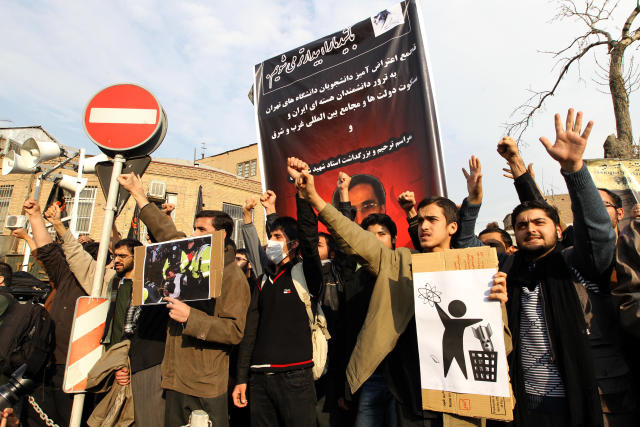
What precipitated the Iranians’ decision, after Witt’s defection, to target U.S. intelligence officers for potential assassinations is unclear, says another former official. It may, in fact, derive from Iran’s conflation of U.S. and Israeli activities. (Israel’s past use of American identities during undercover intelligence operations, as revealed during the investigation into the 2010 Israeli assassination of a senior Hamas official in Dubai, probably deepened this belief, said Wise.)
There’s no doubt that the United States and Israel maintain a close intelligence partnership, “sharing a great deal of key information” on Iran, says the former senior official. And during this key 2010 period, Israel had had much more success in developing spies within Iran itself. “We weren’t as broad in network as the Israelis,” recalls this person. “We relied on the Mossad.”
The Israeli Embassy in Washington did not respond to specific questions from Yahoo News, but instead sent a general statement accusing Iran of operating “a global terror network, which in recent years has perpetrated terror attacks in some two dozen countries on five continents.”
“In light of this threat, intelligence cooperation between Israel and the United States is vital to the security of both countries and to the world,” a spokesperson for the Israeli Embassy wrote in a statement. “Today, that cooperation is stronger, broader and deeper than ever.”
From Tehran’s perspective, the targeting of U.S. and Israeli intelligence officers in Europe could be justified as a response to Israel’s assassination of Iranian nuclear scientists, notes another former U.S. official. “It’s hard to imagine anything more blatant than bombing people on bikes,” said the former official, referencing to the killing of scientists in Iran by motorcycle-riding assassins between 2010 and 2012 — “it wasn’t like they died in their sleep.”
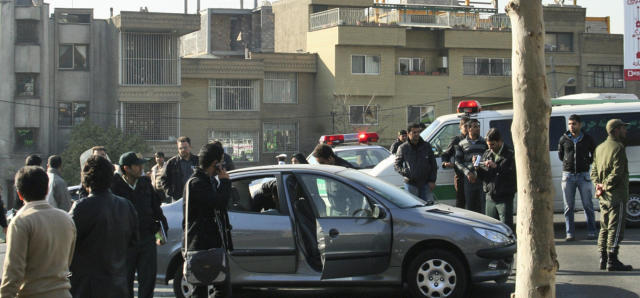
There are other escalation-related dangers. During the Obama administration, recalls the same person, U.S. officials believed that Iran would blame the United States for an Israeli military assault on its nuclear facilities, precipitating just the type of domestic terror campaign that has long concerned U.S. officials. “We have less control over Hezbollah sleeper cells than Israel does on their own turf,” notes this former official.
Still, U.S. officials believed that the Iranians would refrain from undertaking assassinations on U.S. soil, given the possibility of an overwhelming American response. Then, in 2011, U.S. officials uncovered a plot, authored by Iran’s elite Quds Force, to assassinate the Saudi ambassador to Washington in a local restaurant. The consensus within the U.S. intelligence community that Iran’s potential terror planning was solely for wartime contingencies “was shaken after the Saudi ambassador plot,” recalls one former senior official.
After 2013, this consensus, already shaky, was shattered, says another former U.S. intelligence official. During this time, U.S. officials identified multiple instances — fewer than five, says this person — where Iranian operatives appeared to be targeting U.S. and Israeli intelligence officials engaged in activities against Iran for possible assassinations. Critical identifying information about the threatened U.S. intelligence officials — all of whom worked for the Department of Defense — was provided by Monica Witt, the former air force officer who defected to Iran in 2013, says this person. “These people were not identifiable without her help,” the former official said.
Though the plots were prevented before the Iranians were potentially able to carry them out, Iran’s actions went far beyond the mere assembling of dossiers for potential future attacks, said this person. “These were cases where people had been assigned; plane tickets were purchased; weapons caches were in place. Plans were being activated. It had moved long past the written description.”
This was a “five alarm fire,” said this former intelligence official — highly anomalous and inconsonant with the behaviors of other hostile intelligence services like those of Russia or China. “The targeting of American intelligence officers was unique,” the former official said. “When this was happening the reaction was not, ‘Oh these things happen.’ There was shock, awe and surprise. The thought was, ‘The battlefield changes in an instant if this is true.’”
In one unnerving case after Witt’s defection, a U.S. intelligence official in Europe had to be evacuated in the middle of the night with their family because of Iranian operatives casing their home, said this person.
A second former official confirmed the evacuation of a U.S. intelligence official in Europe during this period because of unexpected Iranian interest. How the Iranians had managed to identify this person led to intense scrutiny by U.S. officials — and rising consensus that the Iranians had recruited a U.S. government source, said this former official. There was a great deal of CIA-FBI finger-pointing over this issue, recalls this person.
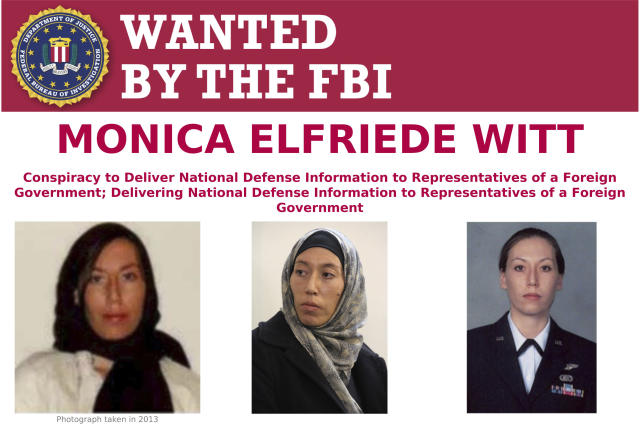
Around this same time, senior CIA officials also warned employees about an aggressive Iranian effort to recruit CIA officers, said a third former official. It was, once again, unclear how the Iranians had identified these undercover CIA officials, again precipitating fears about moles within the U.S. government, or defectors, recalls this official.
The identification of Witt as the defector sent shockwaves through the intelligence community. Her access to highly classified technical collection programs was “immense,” says the first former official, and while U.S. officials had an “inkling” about who Witt was meeting with, and where these meetings were occurring — that she was being debriefed, and who her spy handlers were within Iran — U.S. officials were fundamentally in the dark on what she was sharing with Iranian intelligence.
Then came the potential assassinations, and the realization about Witt’s role in them, says this person. This, in concert with overarching concerns about Witt’s disclosures, prompted U.S. officials to reorient a sensitive national-level technical collection program — allowing for pinpoint geolocation — to try to track her down within Iran. Although approval was eventually given, “there were some conversations with uncomfortable [U.S. government] lawyers” about altering this program, which was strictly regulated, toward hunting down Witt, said this person, because she is a U.S. citizen. The request to alter this program went all the way up to senior Obama-era National Security Council officials, said this former official.
It’s unclear whether this effort to locate Witt was successful.
Iran’s targeting of American officials for potential assassination would cross a fundamental red line, according to those familiar with U.S. intelligence operations. Aside from legal prohibitions, there are important pragmatic reasons for not assassinating intelligence officials from rival countries. In Yemen, recalls another former U.S. intelligence official, the Pentagon was tracking a senior Quds Force commander who was previously stationed in Iraq and whom Pentagon officials considered responsible for the deaths of many U.S. soldiers there. U.S military officials floated the idea of assassinating the commander, but ultimately declined to take action, partially over fears of retaliatory targeting of U.S. intelligence personnel in Afghanistan and Iraq, says this person. It was seen as akin to killing a senior CIA official — a line best not crossed.
While much of the focus over the past decade has been on Iranian intelligence operations in Europe, the Middle East and Latin America, there’s evidence that Tehran’s focus has also moved more recently to the United States, such as with Doostdar, the suspected intelligence operative who allegedly cased targets in Chicago. In another domestic case, federal prosecutors in New York in 2017 indicted Ali Kourani, a dual U.S.-Lebanese citizen, who, according to the FBI, admitted to being a member of Hezbollah’s “black ops” unit working on behalf of “the Iranians.”
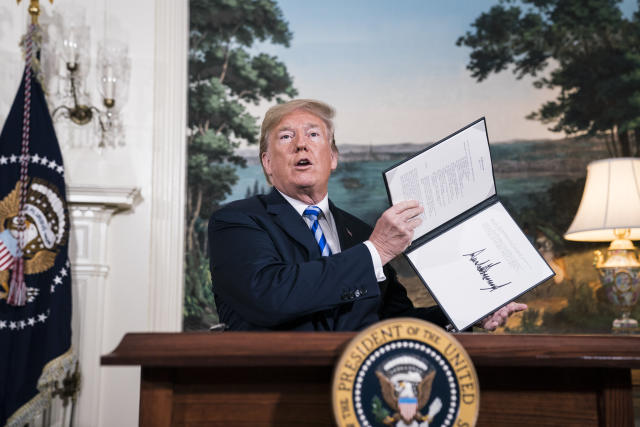
Kourani, according to a summary of his interview with federal law enforcement, admitted to surveilling New York City airports, and he cased FBI, Secret Service and National Guard offices in the city, and researched ways to set up secret weapons caches. He also identified Jewish businessmen in the New York area who were current or former members of the Israeli military.
The question, however, is what are the Iranians preparing for?
Some officials point to the ratcheting up of pressure by the White House and its resident hard-liners. In May 2018, the Trump administration withdrew from the Iran nuclear deal. Administration figures seem to have concluded that Iran has continued to covertly pursue nuclear weapons, despite the U.S. intelligence community’s official assessments to the contrary, say former officials.
It’s “a blatant attempt to politicize the intelligence community,” said Wise, the former DIA deputy director. The Trump administration appears to be looking for a pretext for war, says another former senior official.
The Trump administration seems oblivious to the potential Iranian response to U.S. military action, warn multiple former officials. And yet Iran has been telegraphing its intentions — including its capacity and willingness to use terror — if a war takes place. “We are in such a precarious situation, and people don’t realize it,” says one former senior intelligence official.
“The Trump administration approach is, ‘Oh shit, we’ll drop a few bombs and that’ll take care of it, says another former senior official. “Something precipitous could happen.”

